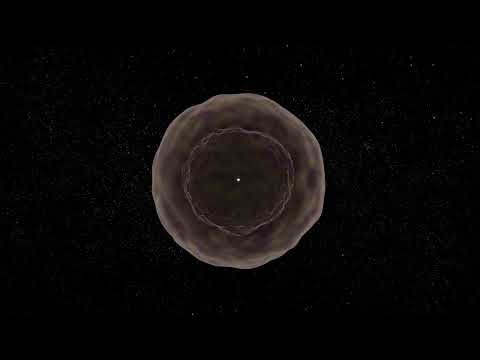A completely new supernova variant finally shows a glimpse of a star’s innermost “guts” moments before its destruction. Detailed in a study published August 20 in the journal Nature, their study confirms a longstanding theory about the internal structure of massive stellar objects, and kicks off a host of new questions.
Diving into star innards
Astronomers have long posited that a star’s innards aren’t simply a chaotic, roiling ocean of superheated plasma. Instead, they believe they possess layers of chaotic, roiling superheated plasma. In massive stars (those 10 to 100 times larger than the sun) nuclear fusion forces lighter elements in a stellar core to combine into heavier relatives. Over eons, these increasingly dense elements burn away within the core as lighter elements incinerate across successive, encompassing layers. This ultimately results in an incomprehensibly heavy iron core that, once collapsed, initiates a supernova or black hole event.
Previously, researchers have documented examples of stripped stars that already lost their helium, exposing stratified, elemental encasements of helium, carbon, and even oxygen. This is usually where such glimpses always ended–until the discovery of SN2021yfj.
‘Something very violent must have happened’
In 2021, a team led by astrophysicists at Northwestern University utilized the wide-field camera array at the Zwicky Transient Facility (ZTF) near San Diego to scour the evening skies. ZTF’s equipment is particularly designed to spot bright, short-lived events like supernovae. In September 2021, researchers noticed just such an occurrence roughly 2.2 billion light-years away. After some assistance from a collaborator at the W.M. Keck Observatory in Hawai’i, they then proceeded to conduct a spectrographic analysis of their supernova discovery, SN2021yfj.
“Almost instantly, we realized it was something we had never seen before, so we needed to study it with all available resources,” study co-author and Northwestern University astrophysicist Steve Schulze said in a statement.
Schulze and colleagues didn’t find the elements they expected (helium, carbon, nitrogen, or oxygen). Instead, their spectrum analysis displayed huge amounts of silicon, sulfur, and argon. These are all heavier elements produced during stellar nuclear fusion near the end of a star’s lifespan.
“This star lost most of the material that it produced throughout its lifetime,” explained Schulze. “So, we could only see the material formed during the months right before its explosion. Something very violent must have happened to cause that.”

‘Exotic pathways’ to a star’s demise
That violent something is still a mystery, although researchers have a theory. This gigantic star had literally ripped itself apart from the inside, revealing a cosmic body “stripped to the bone,” according to Schulze.
The team believes that as the core condensed under its own gravitational strength, it became an even denser inferno. At a certain point, it became so hot and dense that it actually reignited a nuclear fusion process so powerful that it generated a huge energy burst. This, in turn, flung away the star’s outer layers. Each subsequent “pair-instability episode” then shed additional elemental layers.
“One of the most recent shell ejections collided with a pre-existing shell, which produced the brilliant emission that we saw as SN2021yfj,” Schulze theorized.
However, he stopped short of saying this was the star’s definitive cause-of-death. Other possibilities include a pre-supernova eruption, especially strong stellar winds, or even a run-in with an unknown companion star.
“I wouldn’t bet my life that it’s correct, because we still only have one discovered example,” said Schulze. “This star really underscores the need to uncover more of these rare supernovae to better understand their nature and how they form.”
But according to study co-author Adam Miller, the discovery doesn’t mean he and other astrophysicists need to forget everything they know about star life cycles.
“It’s not that our textbooks are incorrect, but they clearly do not fully capture everything produced in nature,” he said. “There must be more exotic pathways for a massive star to end its life that we [haven’t] considered.”






